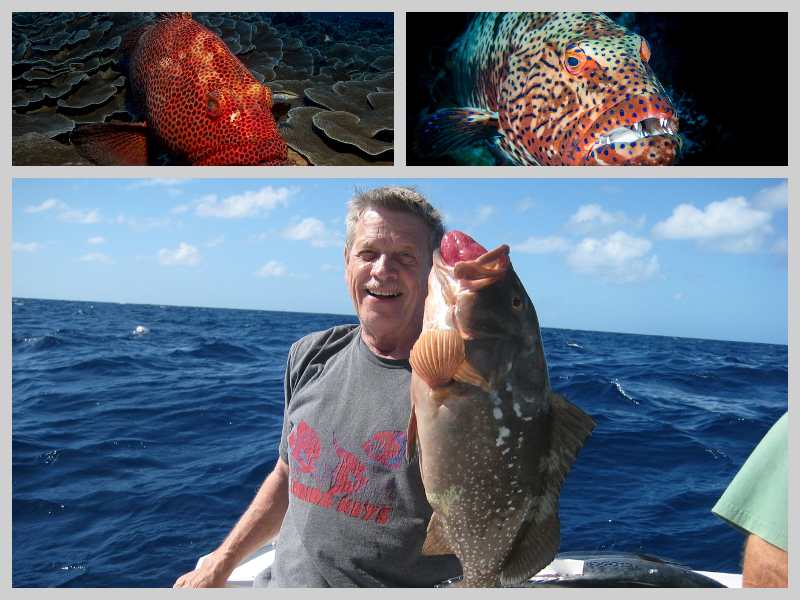
Worldwide there are 159 species of groupers — Epinephelinae — and Florida is home to many of the best species. The Goliath grouper, for example, is a creature of legend — authentic, horrifically large, and majestically a master of its environment. The Goliath Grouper can reach eight feet in length and weigh as much as 800 pounds. Groupers are a fantastic family of fish, and each plays a critical role in the surrounding environment.
How much does a grouper weigh?
As mentioned, the Goliath grouper can weigh 800 plus pounds when fully mature. Many groupers grow to be larger fish and may play a role of an Apex Predator in their environment. The types of grouper and weight are as follows: Florida State Records Via IGFA.
- Black Grouper — Record is 113 pounds six ounces.
- Gag Grouper — Record 80 pounds six ounces – (set right here in Destin, Fl.)
- Goliath Grouper — 680 pounds exactly
- Nassau Grouper — 9 pounds exactly
- 5 Red Grouper — 42 pounds four ounces
- 6 Warsaw Grouper — 436 pounds and 12 ounces (set right here in Destin, FL.)
- 7 Yellowfin Grouper — 34 pounds six ounces
- Calico Grouper (Speckled Hind) — 52 pounds eight ounces ( set right here in Destin, Fl.)
- Scamp Grouper — 28 pounds six ounces
- Snowy Grouper — 70 pounds seven ounces
- Yellowmouth Grouper — 22 pounds eight ounces
How big is a grouper? It depends on the species and where you find them. Their lifecycle moves them throughout the waters of Florida. Most start as eggs and larvae in fringe reef systems, where they feed on plankton. They move inshore and remain juveniles for six months to six years (varies by species.) As they grow and mature, they move farther offshore until they find their ideal habitat. Some species remain as deep water fish; others stay in the shallow reef areas. Grouper size depends on where in the lifecycle you find them and by species, types as each member of the grouper family play a critical role in its environment.
What Is A Grouper Fish?
Groupers are ray-finned fish in the family Serranidae that are predatory fish. You find them in reef systems, where they can and often become a keystone species of that environment—often characterized by a slender body with a giant head and mouth. For a more scientific answer to a grouper fish, the NOAA Pictorial Guide to Groupers is keen.
Where Are Grouper Fish Found?
Shallow reef systems offer the best homes for most species of groupers. The Goliath Grouper is the king of underwater structures, and you find them in shipwrecks, reef systems, shallow and deeper water, and other types of tropical structures. Along with most other types of groupers, their habit is to dig holes around reefs of structures where they hide. They are a lurking predator but will also stalk and ambush prey. There have been episodes of giant Goliath Groupers stalking divers and then trying to ambush them. You can imagine the force an 800 pound Goliath Grouper would produce and the danger its incredibly largemouth would pose to a diver.
Destin, Florida, is an ideal location for grouper fishing. The Gag Grouper, Warsaw Grouper, and Speckled Hind Grouper state records were set here in Destin. Grouper weight is a focal for most anglers as many species of groupers can grow quite large. While much emphasis is placed on Goliath Grouper Fishing, they are protected as of 2021, and fishing them is illegal. The Warsaw Grouper is also protected in Federal waters, and specific requirements are involved when caught. The average grouper size varies from species to species, and most will not approach the Goliath Grouper weight.
Fishing for Groupers in Florida
There are different regulations for fishing Groupers. The State of Florida has its own rules, while the federal government has rules for federal waters. Knowing where the state waters end and the federal waters begin is part of the puzzle of fishing for groupers in Florida.
Warsaw Groupers and Goliath Groupers are both illegal to fish. If you catch one by accident, you will need to be prepared to follow guidelines on how to unhook it. Many anglers target the deep water for giant groupers. It is difficult for a big fish to come to the surface from the deep water spots and survive. The change in pressure can fatally damage them, and they will not recover when released.
The best place to fish for bigger groupers that are not illegal to target is the mid-reefs and structures. The water is not so deep here as to damage the groupers, and there are plenty of groupers available. The season for Scamp Grouper is open year-round. If you want to try something new, consider targeting groupers with a fly rod. Otherwise, a charter is an excellent place to start for the seasoned pro or new fisher.
